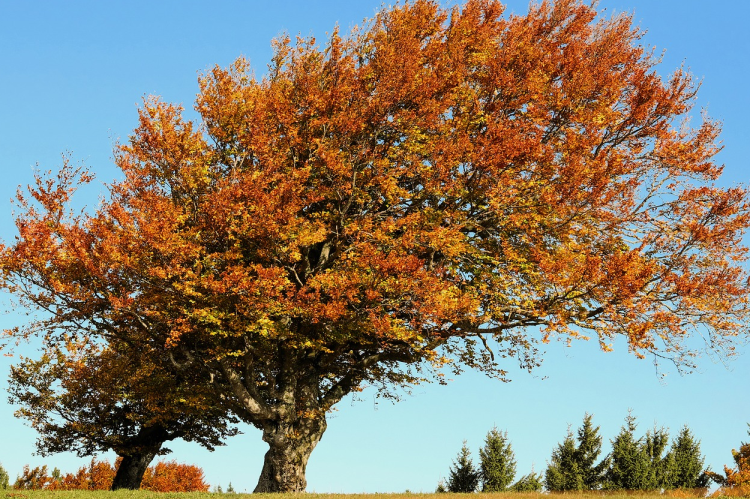Species Focus – Beech (FWN 30)
26 March 2018Beech (Fagus sylvatica) is ubiquitous throughout the country, and arguments continue to persist about its nativeness in Scotland.
Long regarded as non-native trees by many, recent research by the University of Stirling suggests that the DNA of sampled trees throughout Britain is unique to the country (it differs significantly from European beech DNA), indicating that the beech could be regarded as native.
Beech is easily recognised by its silver bark and smooth-edged oval leaves. Its buds are long, slender and pointed. The seed casings are distinctive, measuring approximately 15mm long and covered in bristles, splitting open on ripening in a manner not dissimilar to a peeling banana. The seed itself is actually a nut and has a curious three-angled shape.
Tolerant of a wide range of site conditions, the tree is probably most often associated with shelter belts or field boundaries, where it typically has deep crowns (sometimes shaped by the prevailing wind) and relatively short, stubby stems. However, grown in more sheltered places, with deep, fertile, moist soils, and at a high stocking density, beech can grow valuable timber. Wander around any lowland estate and you will find extensive areas of woodland where the over-storey is beech, often being filled up with sycamore regeneration; these stands were once highly productive timber plantations which have since fallen into neglect.
The main reason for the lack of beech natural regeneration is due to the low success rate of seed. Beech mast years (when trees seed heavily) occur only once every ten years or so, and an enormous proportion of the seed is subject to fungal attack and predation by birds, mammals, insects, resulting in as little as 1% of the seed drop actually germinating. Add to that deer pressure, and late spring and early autumn frosts. However, beech is a shade-tolerant tree so it can be planted under the existing canopy (with tubes to protect from mammal browsing). Planted in groups this way, old beech woods can be slowly brought back into production. Beech also establishes well in the open. Either way, it should be planted at a high density (the Forestry Grant Scheme species a density of 3,200 stems/ha), as this will encourage the growth of tall, straight stems. Beech responds well to thinning, putting on significant and valuable gains in girth; but to maintain stem form the temptation to thin too early must be avoided. Beech’s bark is thin and rapid over-thinning can cause scorching of the bark.
Thinnings will make excellent firewood when dried. Its strong and straight grain, even texture and ease to turn and steam is valued by the furniture industry and niche construction industry.
Under stress the trees can suffer beech bark disease, identifiable by white ‘woolly’ patches on the bark which is a wax excreted by the insect Cryptococcus fagisuga, The insects inject the fungus Nectria coccinea which can kill the bark around the feeding area of the insects.
Thin slices of beech were at one time used to write on, giving the species an association with wisdom and knowledge. This appears to be corroborated by the Swedish word ‘Bok’ means both book and beech, and the similarity between the German word ‘buch’ for book and ‘buche’ for beech.
Early leaves can be eaten, as can the nuts – but not too many as the high tannin content can lead to stomach upsets. The nuts can also be used as an alternative to coffee.
Sign up to the FAS newsletter
Receive updates on news, events and publications from Scotland’s Farm Advisory Service

